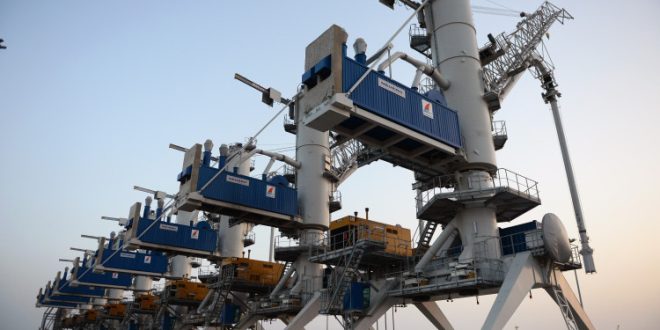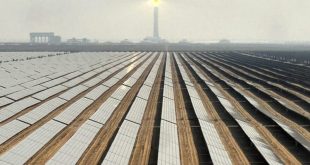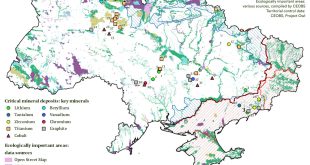In 2016, Iran proposed a regional initiative to develop the Persian Gulf-Black Sea International Transport and Transit Corridor (ITC), which would include Armenia, Azerbaijan, Georgia, Bulgaria, and Greece. This multi-modal corridor will begin in Iran at Bandar Abbas, head north through the country, and continue into Armenia or Azerbaijan, connecting four key maritime basins: the Persian Gulf, the Oman Sea, the Caspian Sea, and the Black Sea. Although not yet implemented, the initiative remains relevant today in the context of strategic competition, as it offers Iran and participating countries an alternative trade route that bypasses traditional Western-dominated shipping lanes, potentially reshaping regional economic dynamics and geopolitical influence.
Eight years on, the Persian Gulf-Black Sea corridor remains largely conceptual, with progress limited to feasibility studies and diplomatic discussions and hampered by minimal infrastructure development. There is no rail connection between Iran and Armenia, and the crucial 165-kilometer rail section connecting Iran and Azerbaijan remains unbuilt. As a result, there is no fully functional multimodal corridor, and transport times exceed anticipated efficiencies. Geopolitical tensions, particularly between Armenia and Azerbaijan, alongside international sanctions on Iran, hinder the project’s viability. At the same time, despite its potential to save time and costs, the corridor’s feasibility is undermined by high expenses and the lack of significant progress, with no completion schedule or detailed cost projections available as of 2024.
A final set of significant challenges that continue to impede the ITC’s development relates to international sanctions, particularly those imposed by the United States. US sanctions on Iran’s financial and banking systems have severely limited progress on the project, unlike the International North-South Transportation Corridor (INSTC), which also traverses Iran but has alternative banking mechanisms. Countries like Bulgaria, Greece, and Georgia, though interested in participating in the development of the ITC in partnership with Iran, have struggled to navigate the sanctions environment. Moreover, the US withdrawal from the Joint Comprehensive Plan of Action (JCPOA) in 2018 complicated projects like India’s investment in Iran’s Chabahar Port, a key entry point for the corridor. Although India received exemptions in 2019, persistent concerns over secondary sanctions have impeded private investment in the necessary infrastructure. The same has been true regarding potential investments and cooperation on constructing the missing Iran-Armenia rail link. Those concerns are likely to grow with the return of Donald Trump to the White House, given his administration’s expected return to a “maximum pressure” campaign against Iran.
Potential game-changing aspects
If the above-mentioned obstacles do not fully derail the ITC, the project could dramatically change the regional geo-economic and geopolitical situation. As project coordinator, Iran is leading efforts to integrate with the wider Mediterranean commercial network and boost its trade with the European Union, while also potentially drawing in economies from further afield, such as India. By streamlining the transregional movement of goods though the proposed ITC, Iran obviously seeks to boost trade and investment opportunities at home while enhancing its economic resilience. Yet the project’s strategic-level benefits would not be limited to just the Iranian economy. The corridor also offers landlocked countries in the South Caucasus and Central Asia a strategic alternative for trade.
Diversification of trade routes
Iran views the Persian Gulf-Black Sea corridor as vital for enhancing economic relations with neighboring or nearby countries, including by strengthening trade ties with Kazakhstan, Uzbekistan, Turkmenistan, Russia, and Azerbaijan, as well as project participants Armenia, Georgia, and EU members Bulgaria and Greece.
The corridor also aims to diversify Iran’s transit options, reducing reliance on traditional routes through Turkey and lessening the impact of international sanctions. Although the European bloc as a whole represents a significant trading partner for Iran, with their imports and exports totaling more than $5 billion in 2023, extensive sanctions imposed by the EU and the US severely limit this relationship by restricting financial transactions and specific goods due to concerns over the Iranian nuclear program.
To navigate these challenges, Iran has sought to boost non-oil exports, including petrochemicals and agricultural products northward, to Armenia and Georgia, while importing industrial machinery and high-tech goods. Yet despite showing modest growth in trade with these two South Caucasus neighbors since 2016, sanctions and infrastructure deficiencies continue to limit the full potential of this strategy. Developing the ITC would help address such hindrances as well as reduce Iranian dependence on Turkey and mitigate ongoing transit conflicts that strain bilateral relations while also reinforcing Iran’s role as a logistical hub in the region. However, challenges remain, including disputes over transit fees, leading to significant border congestion, and a notable decline in trade volumes with Turkey — down to approximately $1 billion in early 2020, a 73% decrease since US sanctions were reimposed in 2018.
Economic integration
The corridor’s potential would be further enhanced by Iran maximizing its import-export exchange with the Russia-led Eurasian Economic Union (EEU) as an alternative to trade with the EU. In particular, Iran stands to benefit from preferential trade agreements enacted by the EEU in October 2019 that reduced tariffs on 862 types of commodities, including 502 products exported from Iran. Additionally, the agreement provides lower customs duties for 360 products sent from EEU countries to Iran. This arrangement is expected to boost mutual trade, particularly with Russia, by tens of millions of dollars. And the Dec. 25, 2023, signing of a full EEU-Iranian free trade agreement (FTA), further enhances the importance of and justification for developing the ITC on the one hand and the importance of the complementary INSTC on the other.
Geopolitical gambles and challenges
Regional tensions
Sustained management of regional tensions among Turkey, Iran, Armenia, and Azerbaijan will be critical for the success of the Persian Gulf-Black Sea corridor project. Armenia’s attempts to exclude Azerbaijan from the corridor exacerbate existing conflicts. From Iran, the corridor could branch off into two primary routes: one through Armenia, in the direction of the Black Sea, and another through Azerbaijan, linking into the INSTC and connecting Iran with Russia. Regional disputes, such as Azerbaijan and Armenia’s border clashes and ongoing tensions regarding the Zangezur Corridor, have hampered trade — while Russia’s uneven support to the two South Caucasus rivals and Turkey’s close alliance with Azerbaijan have further undermined incentives toward regional economic cooperation.
Infrastructure gaps
A significant material impediment to intra-regional trade is the lack of rail connections between Iran and Armenia, with neither side eager to contribute the estimated $3.5 billion required to solve the problem. Currently, road transportation accounts for most of the trade between Iran and Armenia, but existing infrastructure is inadequate for large-scale business.
Similarly, despite a 2023 financing deal between Russia and Iran, geopolitical challenges hinder the completion of the 165-kilometer rail link between the Iranian city of Rasht and Astara, at the Azerbaijani border. This critical gap has forced trade along the INSTC to follow a combination of road transit and sea routes across the Caspian. Without substantial investment in rail infrastructure, neither the ITC nor the INSTC can realize their full potential as a commercial route.
Implications for Iran-Europe trade
If realized, the Persian Gulf-Black Sea corridor could significantly reduce transportation costs and time for trade between Iran and Europe. While precise statistics for this corridor are currently unavailable, similar initiatives like the INSTC have shown potential savings of up to 30% in costs and 40% in time compared to conventional routes, according to research conducted by the Federation of Freight Forwarders’ Associations in India (FFFAI).
By circumventing Russia and the Suez Canal, the corridor offers viable alternatives for countries like India seeking new commercial routes to Europe. Additionally, China stands to benefit from a faster, more economical route to Europe, as evidenced by its involvement in projects like the Anaklia port in Georgia. However, geopolitical tensions and China’s hesitancy to acknowledge separatist regions where Russia maintains a military presence complicate Georgia’s participation. Moreover, Iran must overcome substantial infrastructural, political, and economic challenges to fully realize the corridor’s potential. Without stability in the region, lifted sanctions, and non-Western investment, the project risks remaining an unfulfilled geopolitical ambition given the need for international collaboration and financing for its success.
US and EU interests in strategic competition
The ITC poses certain challenges to US and EU interests within the context of strategic competition. By providing Iran with an alternative route to Europe that bypasses Turkey, the corridor may diminish Western leverage and complicate sanctions enforcement. It could also inadvertently strengthen the positions of Russia and China by increasing their access to the region, with Russia seeking to extend its influence in the Black Sea as a counter to Western dominance.
This situation may further strain the strategic positioning of the North Atlantic Treaty Organization (NATO), complicating the alliance’s efforts to deter Russian aggression and maintain political cohesion among its members. While the corridor could diversify oil channels for its participants, it may also increase European dependence on Iranian petroleum supplies, complicating geopolitical dynamics, particularly if tensions between Iran and the West escalate. Additionally, if, as noted above, the corridor enables Iran to evade international sanctions, this situation would undermine US and EU diplomatic initiatives.
Conclusion
Though its success is not assured, the Persian Gulf-Black Sea corridor has the potential to drastically change trade between Iran and Europe. Iran is making a bold strategic move with this endeavor to strengthen ties with its neighbors and expand its commercial influence. But there are critical obstacles to its success, including a lack of financing, difficulties with infrastructure, and serious geopolitical risks. The development of the corridor is further complicated by the consequences of international sanctions and conflicting regional interests. Although it holds potential advantages, the ITC raises concerns about shifting power dynamics in the region that could complicate NATO operations and jeopardize Western diplomatic and economic leverage.
In order to prevent unintentionally strengthening enemies or endangering their strategic positions in this vital area, the US and EU must carefully evaluate how they will react to this move. The Euro-Atlantic allies should thwart Iran’s attempts to circumvent sanctions while pursuing proactive diplomacy that promotes regional cooperation and opens the door to alternate economic channels. Ultimately, a nuanced approach will be required to handle the complex dynamics at play and ensure that the corridor does not tip the scales in a way that imperils Western interests.





